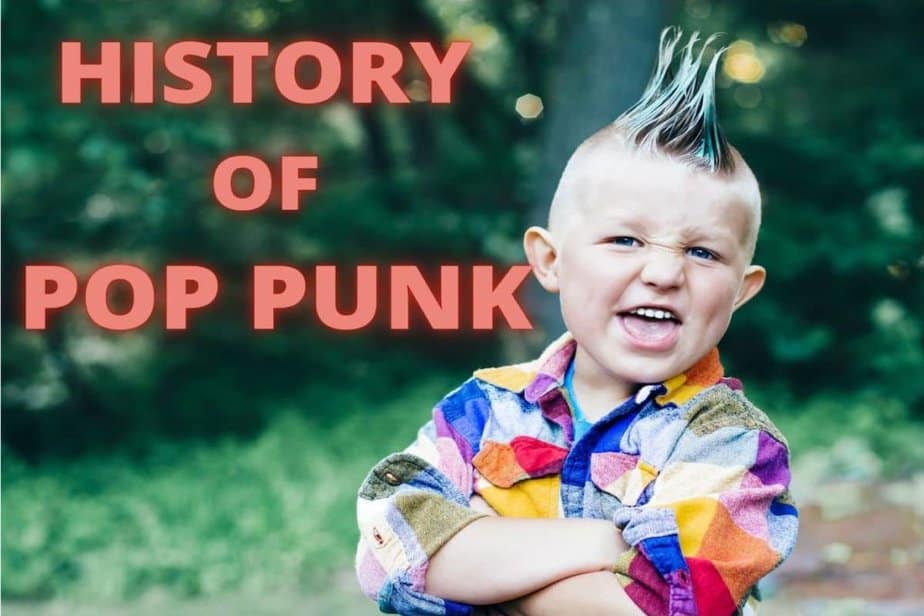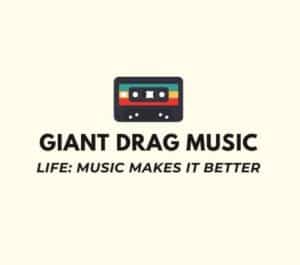
The history of pop punk is one that winds its way though time and space crossing back and fourth over the Atlantic ocean as it takes shape in one era and gets remoulded in another. For those born in the mid to late 80s, it has perhaps been the defining genre of contemporary music for those disaffected or alternative types during their youth, and yet it managed to bridge the gap between marginalisation and mainstream success with relative ease. But what is pop punk? And where did if come from originally?
Origins and Meaning of Pop Punk
Any genre that includes the word ‘pop’ in its name is bound to cause confusion and discussion. A continual confusion reigns concerning the meaning of the word: does it denote popularity or is it referencing a musical style? In order to properly understand the pop punk genre, we need to start by clearing up the confusion. Here goes:
Popular music, often confusingly referred to as pop music, is considered to be music that a lot of people like. Bands of all genres fit this category, from rock, to blues, to jazz, to classical, and so on. Calling a band popular tells you nothing about the musical elements or styles common in the music.
Pop music, on the other hand, is a collection of musical elements that, to make things more confusing, are often associated with popular music and chart music (music in the charts) but doesn’t necessarily mean the music is popular, though it also doesn’t rule out the possibility that it is. Clear? Read the sentence again slowly if you are still confused!
Drawing on these clarifications, we can now define pop punk as punk rock music that includes the musical elements common to the genre pop. Pop music is defined by short or medium length songs, written using the basic verse-chorus-verse structure, which use simple chord progressions, catchy melodies, and musical and vocal hooks that are repeated during a single song.
The history of pop punk begins in the mid-1970s, emerging simultaneously with the genre punk rock. At the time, the musical movement now bearing the name pop punk, was typically called punk or punk rock, only later did people distinguish the differences between the bands involved. It is for this reason that pioneering pop punk bands, like The Ramones, can also be called punk rock. However, what distinguishes them as pop punk is their adherence to the musical elements mentioned above. In particular, catchy guitar riffs, repeated chorus’, and simple song structures.
Proto-pop punk bands include The Beatles, The Kinks, and the Beach Boys. First generation pop punk bands had grown up listening to these bands in the 60s and applied many of the same musical components to their own music. The most influential pop punk bands of the 1970s were The Ramones (1974), The Undertones (1975), The Buzzcocks (1976), and Generation X (1976), among others. These bands combined the catchy, hook driven musical style of pop with lighthearted lyrics about teenage romance and growing up, as opposed to the more political lyrics of typically punk rock bands.
Following the punk DIY (Do It Yourself) ethic, many of the early pop punk bands produced their own music and went on to form record labels in the 1980s. These included Lookout! Records, Fat Wreck Records, and Epitaph Records. The genre became increasingly popular during this period, particularly in the United States. However, it remained marginalised and under-serviced by the major record labels. It wasn’t until the 90s that pop punk broke into the mainstream led by a wave of new bands from California.
Pop Punk and the Mainstream
Perhaps the most influential pop punk band of the era was Green Day. Green Day drew inspiration from the hardcore punk scene, which included the bands Bad Religion and Black Flag. The southern California segment of the genre incorporated more sarcasm and a greater appreciation for melody than was common in hardcore, and Green Day applied this to their own sound.
Having released several albums with independent label, Lookout! Records, Green Day found small-time success as part of the DIY punk music scene in California. Everything changed when they decided to drop Lookout! and sign with Reprise Records (part of the Warner Music Group).
The move resulted in the release of the album Dookie in 1994, which included a host of catchy, melodic tunes, underpinned by distorted guitar riffs. The album was a huge commercial success, reaching number two on the US Billboard 200 album chart and went on to sell 10 million copies. As part of the MTV generation, Green Day benefited hugely from the airplay their songs received on the channel.
But pop punks success wasn’t all about major label muscle. At the same time that Green Day were busy releasing Dookie, The Offspring were introducing the world to their album, Smash – which just so happened to be a smash hit.
Also from California, The Offspring were signed with Epitaph records, an independent label run and owned by the guitarist from Bad Religion, Brett Gurewitz. Released in the same year as Dookie, Smash went on to become the highest selling album ever released by an independent label, selling 16 million copies. Like Dookie, the album feature catchy guitar riffs, fast drum beats, and addictive vocal melodies that stuck with listeners.
Thanks to the success of Green Day and The Offspring, the pop punk genre began to receive a great deal of attention, allowing other bands, such as Bad Religion, Rancid and Face to Face, to ride the wave. Both Rancid and Face to Face were able to secure lucrative contracts with major labels, as the industry searched for the next band who could produce a Dookie or a Smash.
By the late 90s, pop punk had become a well-established commercial genre, particularly in the United States but also in Europe, Australia, and Japan. The genre continued to centre around California, with Blink-182 becoming the next groundbreaking success in 1997 with the release of their album Dude Ranch. The album was followed by Enema of the State, in 1999, which was an even bigger hit than Dude Ranch and secured Blink-182’s position as the most influential pop punk band of their generation.
The band echoed their predecessors in musical style and the lyrics in songs by Blink-182 were in many ways an exaggeration of the surface level emotional themes often present in songs by Green Day and The Offspring, while often lacking the same poetic grace or ironic twists. In many ways, pop punks introverted and self-indulgent lyrical style opened the door for emo music to emerge, which it did a few years later. With it came a sub-genre of pop punk, emo-pop, which has the same musical style but with more depressive lyrical content and an excessive, almost over the top, dark emotional ambience to the music.
Throughout the 2000s pop punk continued to by a major genre in the mainstream, with bands such as Sum 41, New Found Glory, Saves the Day, and then later, Fall Out Boy, Taking Back Sunday, and Good Charlotte. Meanwhile, Avril Lavigne became the genre’s shining female light. Her 2002 album Let Go was a huge commercial success and ushered in a new era of female fronted pop punk bands including: Paramore, Lillix, Skye Sweetnam and others.
The Future of Pop Punk Music
By 2009, pop punk seemed to be running out of momentum. With the emergence of bands like Good Charlotte and Avril Lavigne, the genre seemed to be consuming itself, having run out of new ideas and only capable of somewhat ridiculous, self-referential acts of pop punk creativity. In many ways, pop punk of the late 90s and 2000s, allowed the recoding industry to commodify the ‘alternative’ like never before. The music industry milked the genre for all it was worth during these two decades, until the publics tastes moved towards dance pop.
While the old heroes of the genre, such as Green Day and Blink-182, continue to achieve commercial success and fill stadiums – albeit with a radically different sound from when they started -, fewer and fewer new pop punk acts are achieving mainstream success. However, with the end of its time in the mainstream, pop punk appears to be returning to its DIY roots, a welcome development for old school fans of the genre. In the UK Pardon Us and Great Cynics best represent this development, while in the US it’s the bands Iron Chic and Warriors, among others.
Away from the pressures of the mainstream, perhaps pop punk can once again begin to innovate and create new forms of music, rather than sticking to the tried and tested, commercially viable formulas. As an underground genre, pop punk is once again free to continue winding its way though musical history, taking on new and exciting shapes and forms as it goes.
Key Moments in the History of Pop Punk
1976 – The Ramones release their debut, self-titled album.
1976 – The Buzzcocks release the EP, Spiral Scratch, on their label New Hormones. They are the second punk band to independently release their own music, setting a definitive trend in the scene.
1980 – Epitaph Records is founded by Brett Gurewitz in Hollywood, California.
1988 – Lookout! Records is established in California.
1994 – Green Day release Dookie, the album goes on to sell more than 10 million copies worldwide.
1994 – The Offspring release Smash, which sells more than 6 million copies in the US and 16 million copies in total.
1999 – Blink-182 release Enema of the State, their first album with drummer Travis Barker. The album reaches number 9 on the Billboard 200 album chart and goes on to sell more than 15 million copies worldwide.
2002 – Canadian singer, Avril Lavigne, releases her pop punk album Let Go. The album sold over 20 million copies worldwide and reached number 2 on the Billboard 200 and number 1 in the UK.
